Tactical Advice for Better Board Meetings
By Jon Callaghan, November 1, 2017
How should I run my board meeting? What should I include in my board deck? What do my board members expect of me?
These are questions I hear from first-time entrepreneurs regularly, and it’s always a vibrant topic on the True Founder list.
When I first wrote about how to have more productive startup board meetings, I shared that the traditional “reporting model” is broken, at least for early-stage startups. I readdressed this topic in a conversation with Harry Stebbings on The Twenty Minute VC podcast, and today share some more tactical advice.

Below are some thoughts on running — and preparing for — effective board meetings:
1. Materials: The deck and a high-level agenda.
Your deck should be 10-25 slides max. An appendix may be helpful, but steer clear of overloading the deck. As the famous Blaise Pascal adage goes, “If I had more time, I would have written a shorter letter.”
Your slides should include the following:
- Mission/Goals/KPIs, i.e., where your energy is focused now and why
- Highlights/Lowlights for that period, which will help you and the board focus on what’s going well and what’s not
- Business specifics and metrics:
- Sales/Bookings update and pipeline for the period, if you have them
- CAC spend analysis, if appropriate
- Customer update: specific customer trends/stories and profiles for the period
- Financial update:
- Burn Rate/Runway Analysis, categories of spend (headcount, marketing/acquisition, other fixed)
- Income Statement, Balance Sheet, Cash Flow
- Team update, key hires, org chart
- A placeholder slide for an “Executive Session” at the beginning or end of your board meeting
If a deck works for you, use one. Although, there are other formats that work just as well.
2. Require your board to review your materials in advance of the meeting.
Send your deck and any other supporting info 3 to 5 days in advance of the meeting. Require that your board members read it, and have them send back observations and questions.
Additional Prep: Ask your board members to prepare a few discussion topics. I’ve seen this technique work very well because it surfaces topics of interest to your directors and allows for preliminary work prior to the meeting, making the time you spend as a group more productive. Sometimes you can answer specific questions in advance of the meeting, as well, but either way you go in prepared.
3. Enter the meeting with your high-level agenda, but don’t be afraid to ditch it halfway through.
Successful early-stage startup board meetings are “working meetings” that often shatter manicured agendas. Creating a high-level agenda is a useful tool for gathering your thoughts and identifying areas where you need help most. High-level agendas also give you a jumping off point for starting and leading dialogue. Once a healthy discussion starts, consider your agenda’s job primarily done.
4. Never read slides or bullets in a startup board meeting.
The last thing you want is for a room full of incredibly talented people, all of whom care tremendously about your success, to merely read your slides or follow along. Set your deck aside and yourself up for success by beginning your board meetings with the following statement: “Here’s one area where I could really use your help.”
It might be that you need to hire a VP of engineering but don’t have access to a technical talent pool. (Your board likely has different access.) Or, perhaps you’re struggling with pricing and know it’s the one thing that will determine success or failure for your company. (Tell us about it, and ask for help!)
5. Get the most out of your board meetings with the help of an Executive Session.
In an Executive Session, the Founder/CEO and board members meet without anyone else in the room. Typically, this takes place at the end of a board meeting, but I prefer it at the beginning since it helps to frame up dialogue for the meeting that’s about to occur. Even if there is nothing specific to discuss, hold 10-15 minutes open for this session. Over time, you will be grateful you have time to discuss touchy subjects or things you wouldn’t otherwise bring up.
Also allow time for the board to meet for 10-15 minutes without you at the end of the meeting. This is a best practice that will ultimately allow you to collect follow-on feedback that might exist in the room but is less likely to be discussed in your presence.
![]()
In the end, the purpose of a board meeting is for us all to discuss what you’ve learned and how we can help you with what’s next. Enter prepared, stray away from the script and remember that your board members are ultimately just fellow human beings who happen to have a huge interest in your success.

